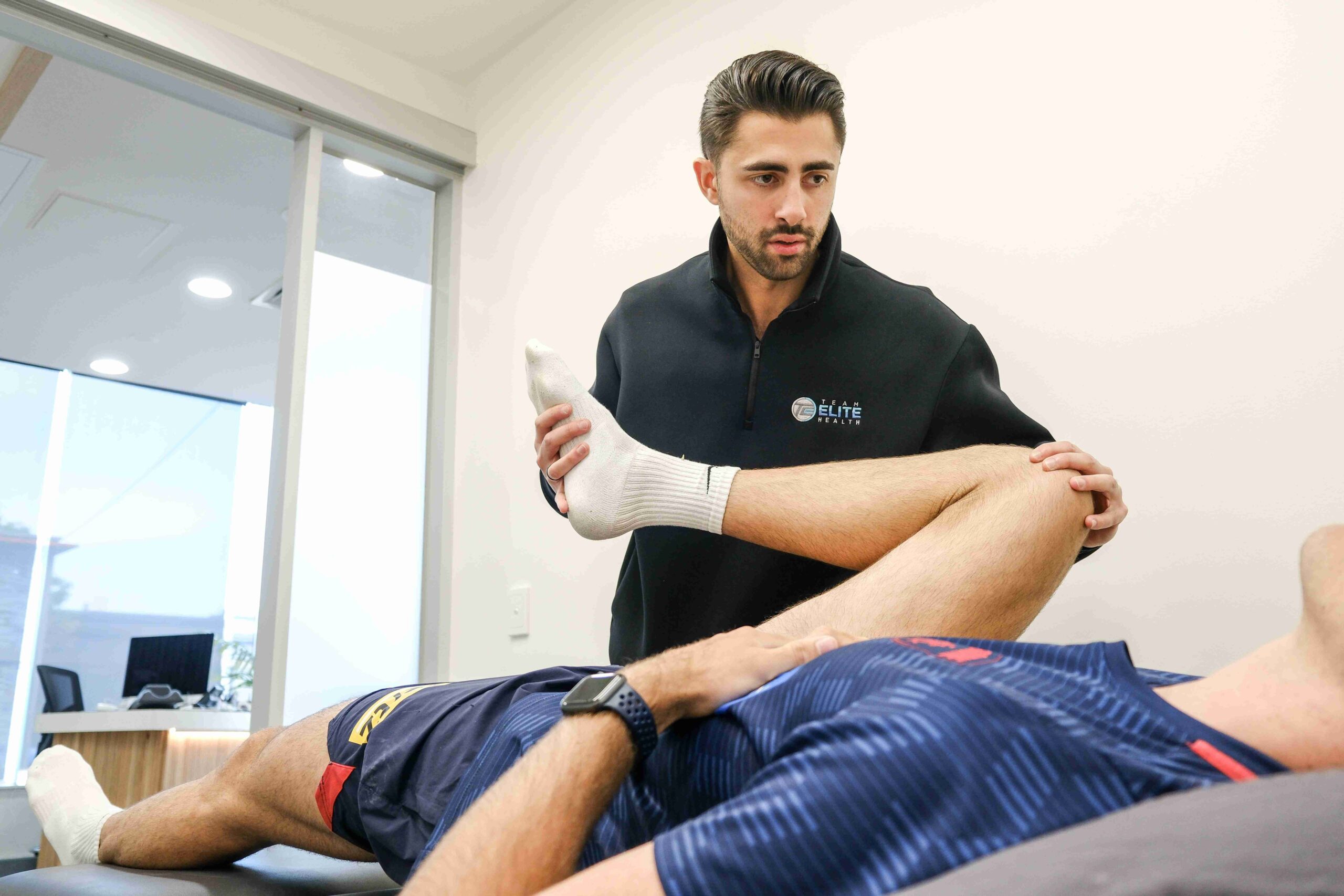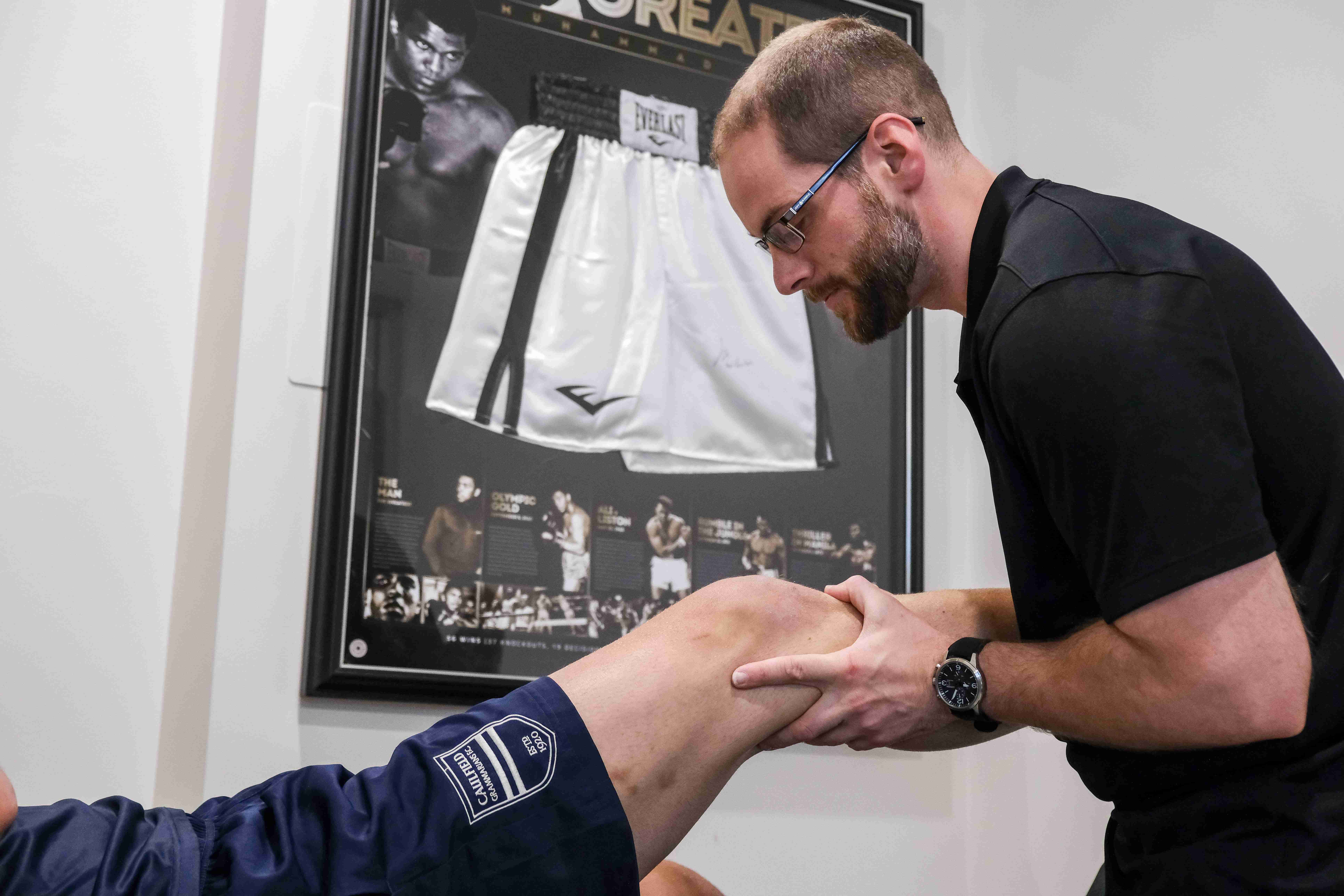The Importance of Physiotherapy in Sports Performance and Injury Prevention

There is a common belief that higher training loads are associated with higher injury rates, however there is evidence which supports physiotherapy and strength training as a protective factor against injury and improving performance.
Physiotherapy is an essential discipline in which both professional and amateur athletes can rely on to give expert advice to enhance their physical competence, prevent injuries and thus improve overall performance. Physiotherapy plays a role in injury prevention in sports, through carefully tailored strengthening programs which address deficits in strength, thus improving an athlete’s performance in their specific sport. Physiotherapists help with the promotion of safe physical activity participation, provision of advice and adaptation of rehabilitation and training interventions for the purposes of preventing injury.
Common causes of sporting injuries which may cause athletes to miss time from their sport include overuse, poor biomechanics and reduced conditioning.
Overuse injuries

Overuse injuries such as stress fractures and tendinopathy are highly prevalent and contribute to a high amount of time spent away from sporting activities. Unlike acute injuries – which are caused through sudden trauma, overuse injuries develop gradually over time due to repeated stress on tissues such as tendons, muscles, ligaments and bones (Launay, 2015). This occurs due to the body’s inability to repair and adapt to stressors placed on such tissues, thus leading to tissue damage, inflammation and associated pain. Physiotherapy is a necessary tool in avoiding overuse injuries as areas of weakness can be addressed and will incorporate load management techniques.
Tendon related injuries including quadriceps tendinopathy are associated with overuse, typically from repeated jumping, kicking sports, where the quadriceps cannot withstand load, leading for the tendon to become inflamed. Participating in early intervention from a physiotherapist helps reduce time away from sport. This is due to being provided with educated advice of load management techniques, icing and appropriate injury specific exercises to help increase strength and thus return the patient to play.
Lumbar or Back stress fractures are common overuse injuries in adolescents who participate in high levels of sport. Through having early intervention with carefully tailored exercise programs, patients are able to reduce inflammation from stress reactions, thus allowing the athlete to progress through rehabilitation and return to sport in a timely manner.
Poor biomechanics
Biomechanics is the study of how forces and movement interact through the body. When an individual has sub-optimal biomechanics, this means that their body is not moving efficiently and transferring force effectively. This may be due to a variety of factors such as muscle imbalances, reduced joint range of motion, poor technique or postural issues. By having poor biomechanics an individual will have increased risk of injury due to potential increase of forces through certain muscles/joints, poor compensation patterns and decreased energy efficiency due to excessive energy expenditure to perform movements (Hewett & Bates, 2017). These factors will also negatively affect performance in sport.
Athletes who run with poor knee drive, poor hip extension, increased hip adduction and increased extension or rotation through the trunk are not moving their body effectively thus reducing an individual’s ability to perform at their peak. Having physiotherapy input on biomechanics allows for conscious incompetence and then conscious competence. Conscious incompetence is the process of an individual being consciously aware of how to improve technique thus improving efficiency. Physiotherapists can highlight these issues and thus begin steps to improve performance. Over time individuals become consciously competent due to repetition of particular drills to improve efficiency, and eventually become unconsciously competent.
By incorporating physiotherapy into an athletes routine, biomechanical patterns can be positively changed through gait retraining, improve strength with a tailored strengthening routine and thus improve overall energy expenditure as the athlete moves more efficiently. Within the adolescent population biomechanical retraining is imperative for individuals who have suffered from conditions such as lumbar stress fractures, in order to reduce their risk of re-injuring of the same or new areas of the spine if the patient is running in a way which places extra stress in injury prone areas.
Reduced conditioning
Reduced conditioning refers to an individual’s decline in physical fitness which occurs due to inadequate training levels. Having reduced conditioning levels negatively impacts one’s performance, as it may cause a reduction in aerobic capacity and poor muscle strength. Having deficiencies in these areas will negatively influence one’s performance as they may not be able to effectively meet the demands of their sport. If an individual were to participate in a sport which exceeded their current conditioning level they are at risk of injury. Through participating in physiotherapy, individuals will be able to optimise performance through tailored strength training which takes into account their selected sport and own capabilities.
In the adolescent population we see reduced conditioning during time periods such as summer holidays as often this is where sports ceases for approximately two months. When this decline in activity levels occurs, the individual may be at risk of injuries such as stress fractures, apophysitis or tendinopathies, as once they return to sport their load exceeds their new reduced muscular capabilities.
It is imperative that after periods of reduced conditioning that individuals find a happy medium between overtraining and under training. Over training occurs when a person’s energy expenditure exceeds their body’s ability to recover from strenuous exercise. Under training occurs when there is a decline or stagnation of performance due to insufficient training frequency, volume, or intensity. With guidance of a physiotherapist an adequate preseason or in season program can be provided to reduce risk of deconditioning. Alternatively, a physiotherapist can help guide return to sport after a prolonged rest period to reduce the risk of over-training, thus reducing injury risk. By involving physiotherapy in an athlete’s routine such injuries can be avoided and thus increase the amount of time participating in sport related activities and athletic satisfaction. By reducing the risk of injury, focus can then be on improving sporting performance.
Launay, F. (2015). Sports-related overuse injuries in children. Orthopaedics & Traumatology: Surgery & Research, 101(1). https://doi.org/10.1016/j.otsr.2014.06.030
Hewett, T. E., & Bates, N. A. (2017). Preventive Biomechanics: A paradigm shift with a translational approach to injury prevention. The American Journal of Sports Medicine, 45(11), 2654–2664. https://doi.org/10.1177/0363546516686080
Sasaki, K & Neptune, R (2005) Muscle mechanical work and elastic energy utilization during walking and running near the preferred gait transition speed
Share :


